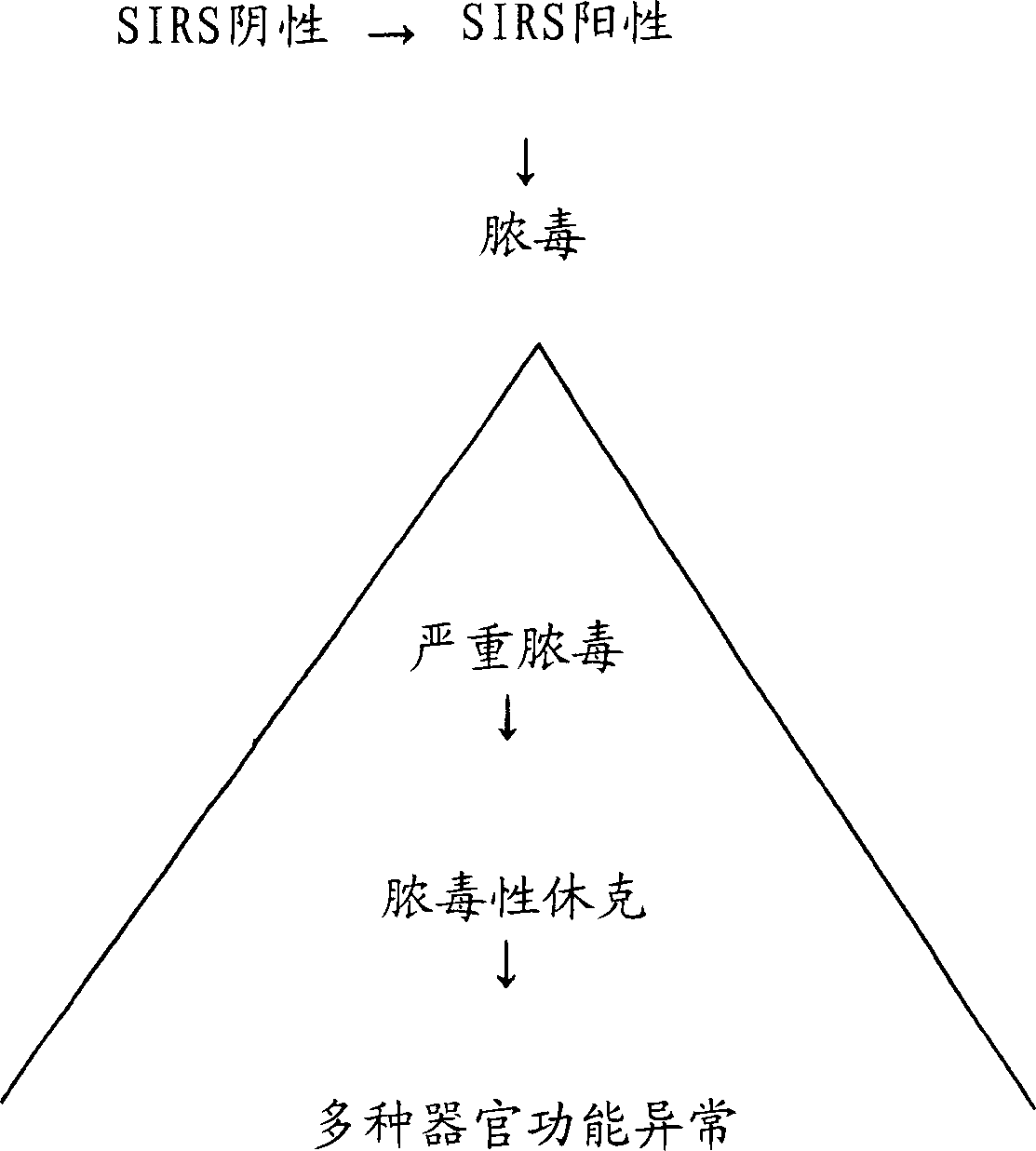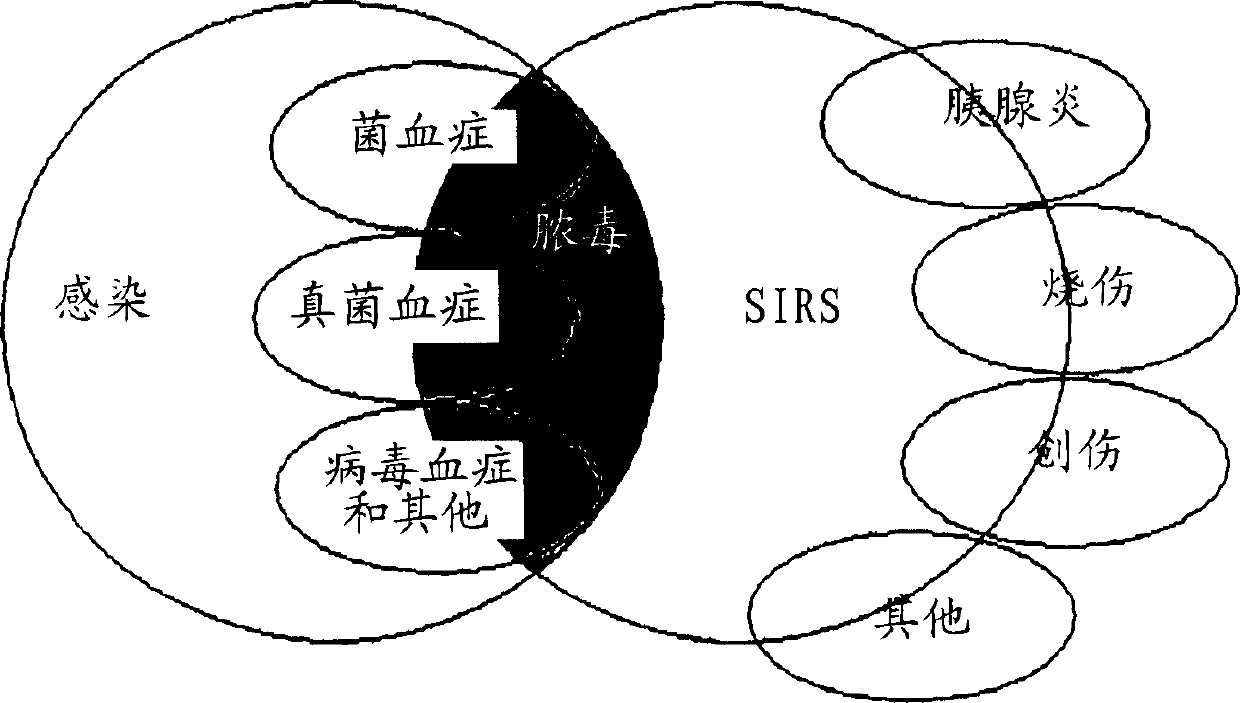Diagnosis of sepsis or SIRS using biomarker profiles
A technology of biomarkers and sepsis, applied in the diagnosis of systemic inflammatory response syndrome in individuals, diagnosis or prediction of sepsis in individuals or its development stage, can solve the problem of not predicting the development of sepsis, and achieve rapid and sensitive The effect of prediction and diagnosis
- Summary
- Abstract
- Description
- Claims
- Application Information
AI Technical Summary
Problems solved by technology
Method used
Image
Examples
Embodiment 1
[0093] Example 1: Identification of small molecule biomarkers using quantitative liquid chromatography / electrospray ionization mass spectrometry (LC / ESI-MS)
[0094] 1.1 Samples received and analyzed
[0095]Reference biomarker profiles were established for two populations of patients. The first cohort ("SIRS group") represented 20 patients with SIRS who entered the study on "Day 1" but did not develop sepsis during their hospitalization. The second population ("sepsis group") represented patients who also had SIRS and entered the study on Day 1 but developed sepsis at least several days after entering the study. Blood samples were collected approximately every 24 hours from each study group. Clinical suspicion of sepsis in the sepsis group occurred at "time 0", detected by conventional techniques. "Time - 24 hours" and "Time - 48 hours" represent samples taken about 24 hours and about 48 hours before clinical suspicion of onset of sepsis in the sepsis group, respectively. ...
Embodiment 2
[0198] Example 2: Identification of protein biomarkers using quantitative liquid chromatography-mass spectrometry / mass spectrometry (LC-MS / MS)
[0199] 2.1 Samples received and analyzed
[0200] As above, the reference biological Mark spectrum. Blood was drawn from the patient on day 1, time 0, time -48 hours. In this case, 50-75 μL plasma samples from patients were pooled into four batches: two batches consisting of 5 and 10 individuals, respectively, who were SIRS positive, and two batches consisting of 5 and 10 individuals, who were both is positive for sepsis. Six samples from each pooled batch were further analyzed.
[0201] 2.2 Sample preparation
[0202] Plasma samples were first immunodepleted to remove excess proteins, particularly albumin, transferrin, haptoglobin, anti-trypsin, IgG, and IgA, which together make up approximately 85% (wt%) of the protein in the sample . Immunodepletion was performed with Multiple Affinity Removal System columns (Agilent Technol...
PUM
 Login to View More
Login to View More Abstract
Description
Claims
Application Information
 Login to View More
Login to View More - R&D
- Intellectual Property
- Life Sciences
- Materials
- Tech Scout
- Unparalleled Data Quality
- Higher Quality Content
- 60% Fewer Hallucinations
Browse by: Latest US Patents, China's latest patents, Technical Efficacy Thesaurus, Application Domain, Technology Topic, Popular Technical Reports.
© 2025 PatSnap. All rights reserved.Legal|Privacy policy|Modern Slavery Act Transparency Statement|Sitemap|About US| Contact US: help@patsnap.com



